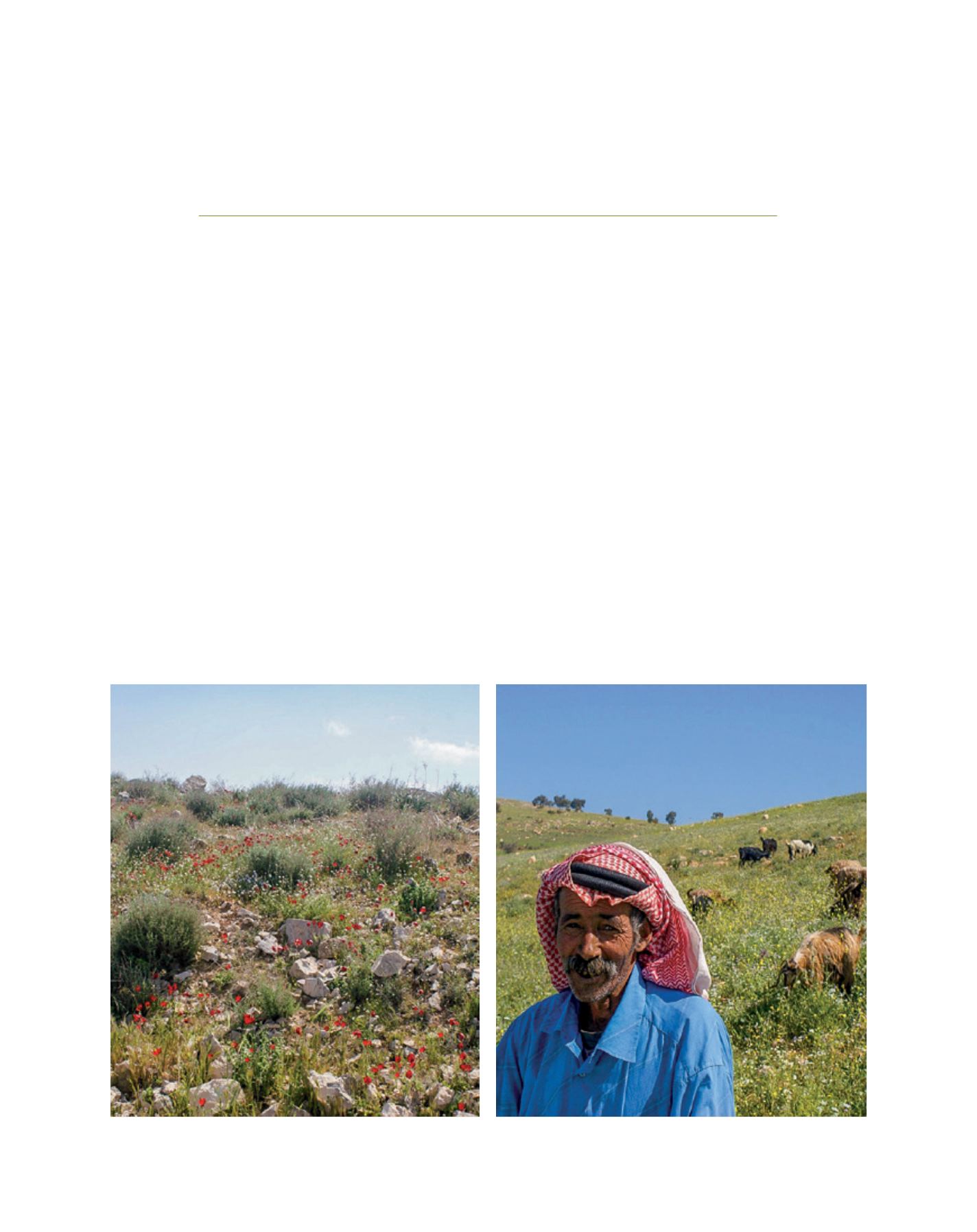

[
] 134
Enabling investments in
sustainable rangeland management
G. Metternicht, University of New South Wales Australia, School of Biological, Earth and Environmental Sciences
and Dryland Ecosystems Thematic Group, IUCN; P. Laban, Dryland Ecosystems Thematic Group,
International Union for Conservation of Nature Commission on Ecosystem Management; J. Davies and C. Ogali,
International Union for Conservation of Nature Global Drylands Initiative
R
angelands are places of important biodiversity
and ecosystem services that occupy up to a
half of the Earth’s landmasses and up to three
quarters of the world’s drylands,
1
providing benefits
to local communities, to national economies and to
global society. Desertification and land degradation
significantly affect rangelands, and in many countries
measures to address rangeland degradation are weak or
absent. Furthermore, integrated assessment of range-
land health status is absent in most countries and this
is contributing to inappropriate investments and poli-
cies that in turn can lead to desertification and poverty.
Current projections establish that we need at least 70-100
per cent greater food production from existing land in
order to feed the current population and future genera-
tions.
2
This is likely to place more pressure on existing
resources, leading to conversion of forest and rangeland to
cropland, and consequent risk of land degradation. Land
use conversion and land cover change have been identified
as the leading factors in land degradation and desertifi-
cation.
3
Proximate causes of land degradation such as
overexploitation for agriculture and extractive activities
have a number of common roots. Fundamental social or
biophysical processes underpin the proximate causes of
land degradation and desertification, which are immedi-
ate human or biophysical actions with a direct impact on
dryland cover.
4
Despite weak evidence in many countries, there is wide-
spread (though not universal) belief that overgrazing is a
Left, Hima Bani Hashem, Zarqa Governorate and (right) a Bedouin herder in the Hima Iyra Range Reserve, Salt Governorate
Images: Abu-Zanat
L
iving
L
and
















